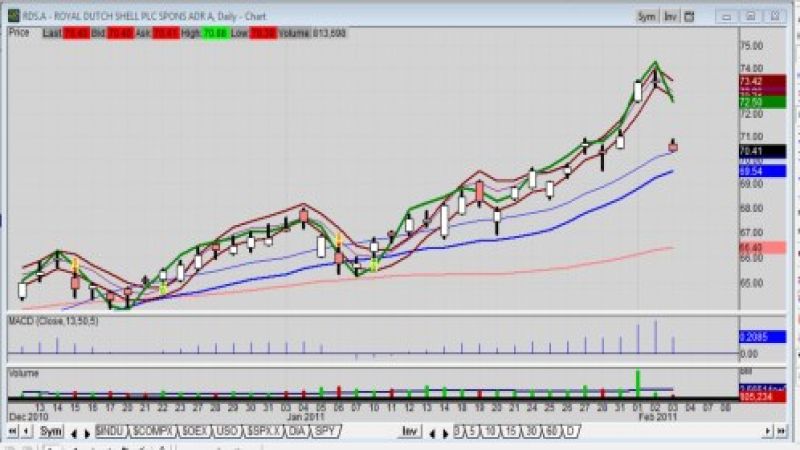Auto stock investors and traders follow gasoline for a reason. Traders started a sell-off in pre-market hours for Royal Dutch Shell (NYSE: RDS.A) and that has carried over into trading in New York.
Shell, in a press release out of London on Thursday, said fourth-quarter profit skyrocketed. However, the oil company increased production, but missed analysts' expectations.
Upstream earnings jumped in the quarter to $5.1 billion from $2.54 billion. That’s a double by every measure. Furthermore, earnings from its downstream operations, known as its refining arm, were $411 million, reversing a year-earlier loss of $1.76 billion.
Excluding certain items in the fourth quarter, like one-time items and inventory changes, earnings were $4.1 billion. Analysts polled by Thomson Reuters expected $4.85 billion; and analysts do not being disappointed.
According to the Street.com, that missed the $4.7 billion mean-estimate of 16 analysts surveyed by Bloomberg.
Simple market truth is, one analyst’s miss might be forgiven, but not sixteen.
A review of the news release shows Shell’s fourth-quarter earnings were supported by higher oil prices and chemicals margins. But its earnings were impacted by "weak refining margins, pressure on certain regional natural gas prices, and volatility in downstream marketing margins as a result of rising oil prices," the company said.
Looking forward, though, CEO Peter Voser said the company is 'on track' to raise output by 11% as it works on new projects across the world.
More important, LNG sales volumes increased by 25%, and that is telling the auto market something relevant - peak oil has occurred.
From a chart perspective
The pre-market and futures get the jump once again, as the ADR trading in New York doesn’t start until 9:30 EST.
Still, a 15 minute chart look tells the story. The market does not like anyone missing expectations no matter how much money a company may have made in the year and the most-recent quarter.
Fact is, Royal Dutch Shell has been in a bullish trend bias since its dip in late December. It’s lowest low in 2010 was 49.16 .
Looking into history, RDS had its highest high in 2008 at 88.73 and its lowest low in 2009 at 38.26.
What must traders do at this point? If long, protect your positions with put options, but the carnage has already been initiated. The only other choice is to get out or hold until buyers come back in; and that’s anyone’s guess.
The chart shows support at the 13-day moving average of 69.56 and the 50-day moving average at 56.41.
Disclosure: Frank Sherosky, creator of the chart and author of "Awaken Your Speculator Mind" does not hold any stock or option positions in this stock at this time.
-----------------------
About the Author: After 39 years in the auto industry as a design engineer, Frank Sherosky now trades stocks and writes articles, books and ebooks via authorfrank.com, but may be contacted here by email: [email protected]
________________________________________________
Additional Reading:
2011 Dakar Rally proves compressed natural gas a viable vehicle fuel
Global markets still lacking a global automotive ETF
Cella Energy achievement may make hydrogen fill-up a reality
Honda stock a steady dream performer amid Toyota recalls










